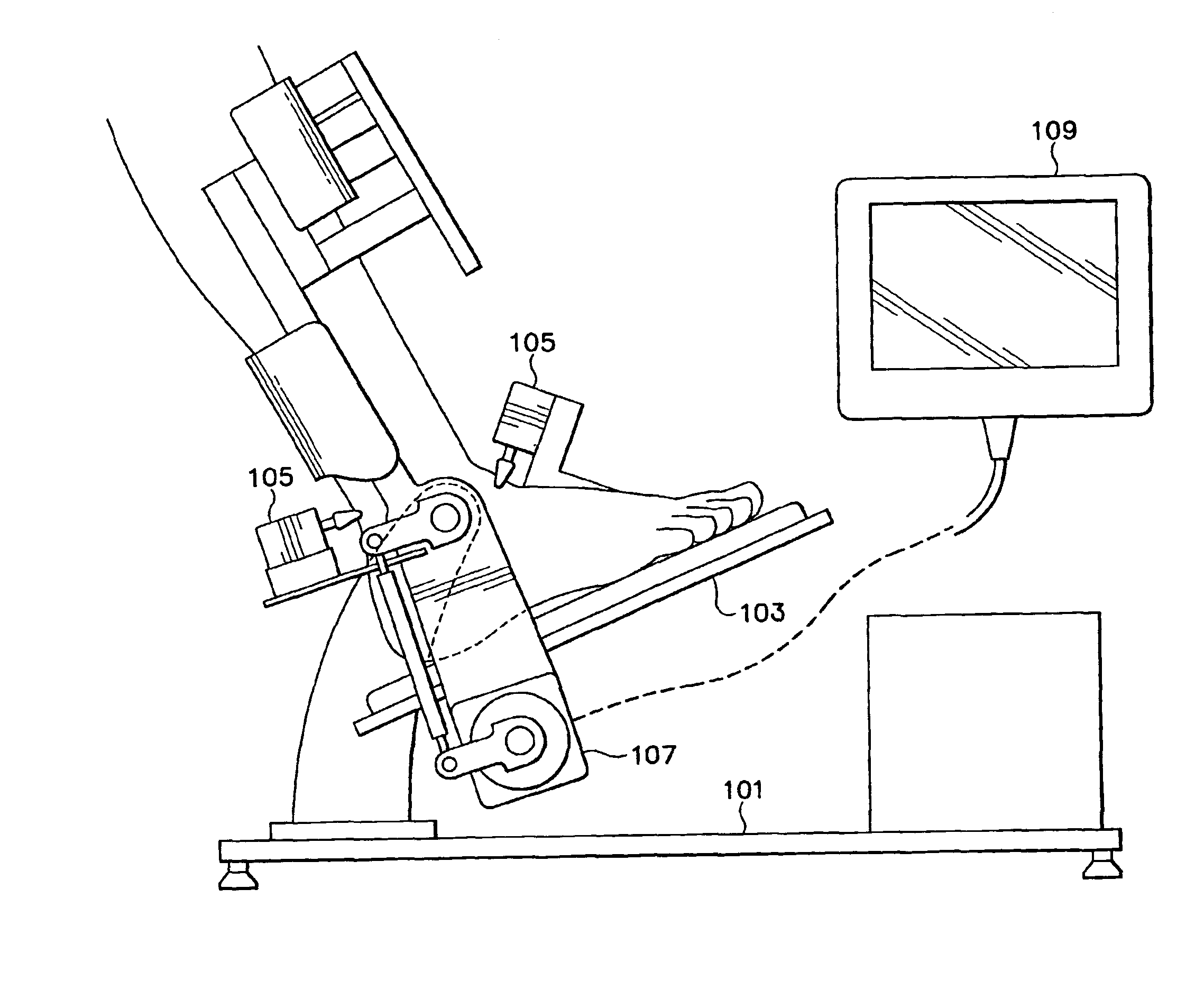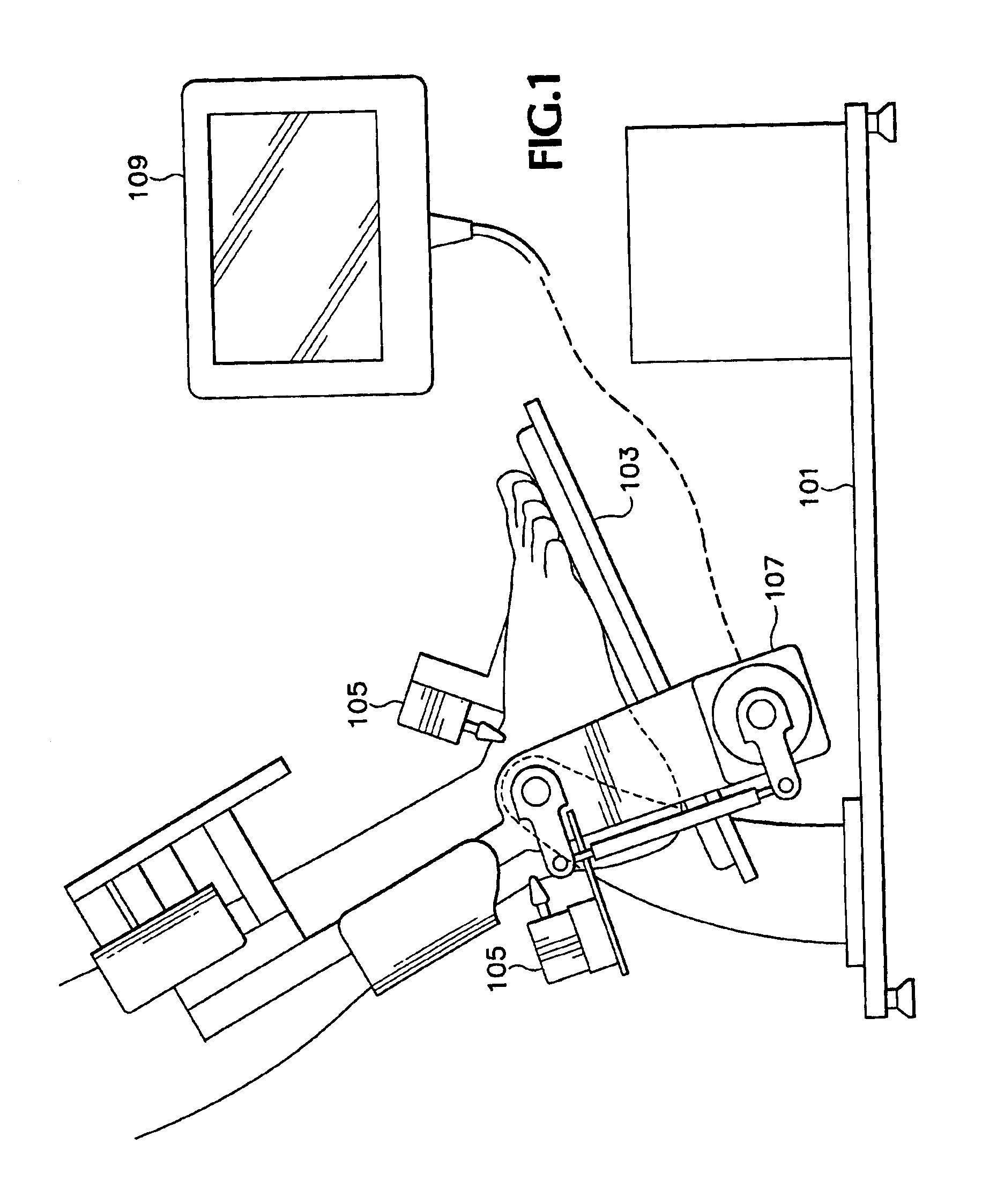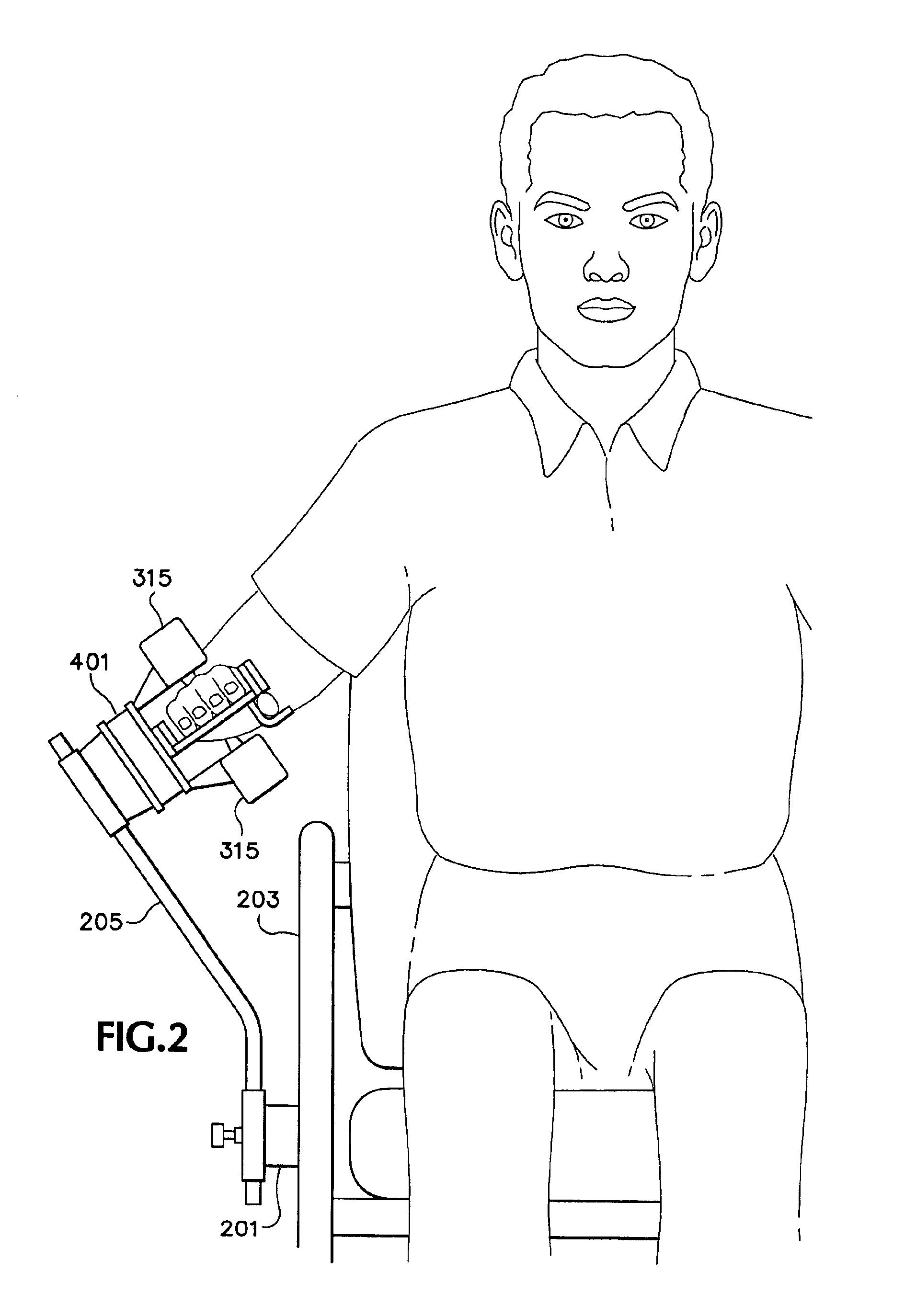Method and device for rehabilitation of motor dysfunction
a technology for motor dysfunction and rehabilitation, applied in chiropractic devices, physical therapy, massage, etc., can solve the problems of reducing the individual's capacity for self-care and quality of life, reducing the patient's ability to achieve improvement in physical therapy, and reducing the patient's quality of life, so as to improve the ability to activate the muscles, reduce or eliminate spastic contractures, and improve the effect of motor control
- Summary
- Abstract
- Description
- Claims
- Application Information
AI Technical Summary
Benefits of technology
Problems solved by technology
Method used
Image
Examples
example 1
A 53 year-old male, 6 weeks post-stroke, with severe paresis in his right leg and arm and who was confined to a wheelchair, was treated in accordance with the method of the invention for 10 days. The results were a 400% increase in strength of ankle dorsiflexion, a 100% increase in strength of ankle plantarfiexion, and a 150-200% increase in strength of elbow flexion and extension. The spasticity in the ankle plantarflexors and elbow flexors was significantly reduced. The subject was walking independently with a cane after 10 days.
example 2
A 72 year-old female, 11 years post-stroke, with substantial weakness and spasticity in her right leg, was treated on her right ankle in accordance with the method of the invention for a period of 9 months. The results were a 100% increase in strength and muscle mass in her ankle flexors and extensors. She also had a marked reduction in ankle inversion due to a reduction in spasticity. This subject discarded her knee brace and obtained a larger size ankle brace, which was necessitated because of muscle hypertrophy due to the therapy.
example 3
A 65 year-old female, 3 years post-stroke, with weakness of her right arm and leg, was treated on her right elbow in accordance with the invention for 4 months. The results were a 400% increase in flexor muscle strength and a 10-fold increase in voluntary range-of-motion.
PUM
 Login to View More
Login to View More Abstract
Description
Claims
Application Information
 Login to View More
Login to View More - R&D
- Intellectual Property
- Life Sciences
- Materials
- Tech Scout
- Unparalleled Data Quality
- Higher Quality Content
- 60% Fewer Hallucinations
Browse by: Latest US Patents, China's latest patents, Technical Efficacy Thesaurus, Application Domain, Technology Topic, Popular Technical Reports.
© 2025 PatSnap. All rights reserved.Legal|Privacy policy|Modern Slavery Act Transparency Statement|Sitemap|About US| Contact US: help@patsnap.com



